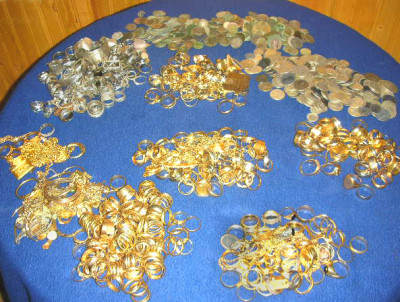The Sovereign and Excalibur were my first introduction to a kind of detector that has a heavily processed signal. What I mean by that is that a lot of things happen in-between ground and headphone. With this kind of machine, if your settings are correct–there’s a lot of benefits, but if you try to push the sensitivity to hard–you will lose depth. With a pulse or single frequency detector, you hear every nuance of the ground. With multi frequency machines like the CTX–the signal “rides above” a lot of these ground noises. The tradeoff is that its a lot harder to tell how the detector is performing. It always sounds like “all is well”–but sometimes it isn’t. A good example with the CTX is black sand–the complex signal and viscosity of the black sand just don’t mix–reducing depth by about 1/3rd. In salt the CTX will get rings down at 15, or 16″ plus whwereas in black sand this is cut way down. Running Auto Sens doesn’t help much. I prefer Manual because Auto doesn’t teach you anything. With manual you are forced to address the machines shortfallings by developing your coil control skills in response to threshold changes. For me, this is the key to getting the best performance from the CTX. Manual also lets you run a more aggressive level–instead of continually dropping down over minor ground changes. These changes can be dealt with by way of coil control. I usually run Andy’s Beach program as a search mode. In dense trash or noisy environments I run Jay’s goldProgram–with a few modifications. This is a great set-up for picking through multiple targets efficiently. Andys program has good depth and the P2 has some edge rejects to run in open (slow) water for more depth. I use the “Last Program User button” to go between the two. With the 17″ coil it’s a good idea to try and avoid closed screen programs to reduce the amount of work the machine is doing. I then use Jay’s Gold as a checker. This is an important part of running the CTX effectively–to recognise that it has limits in what it can do at a given time–slow, even sweep speed, and less discrimination will get you more depth and less overrunning of small targets. More information on running these programs can be found in my book: “A Practical Guide to Finding Gold, Silver and Coins with the Minelab CTX 303.’ I like to think that this book is a bit more advanced than anything else that’s been written on this detector. There are also a variety of CTX 3030 programs available for download.
Good Luck Detecting,
clive

Some finds from the last 15 years.